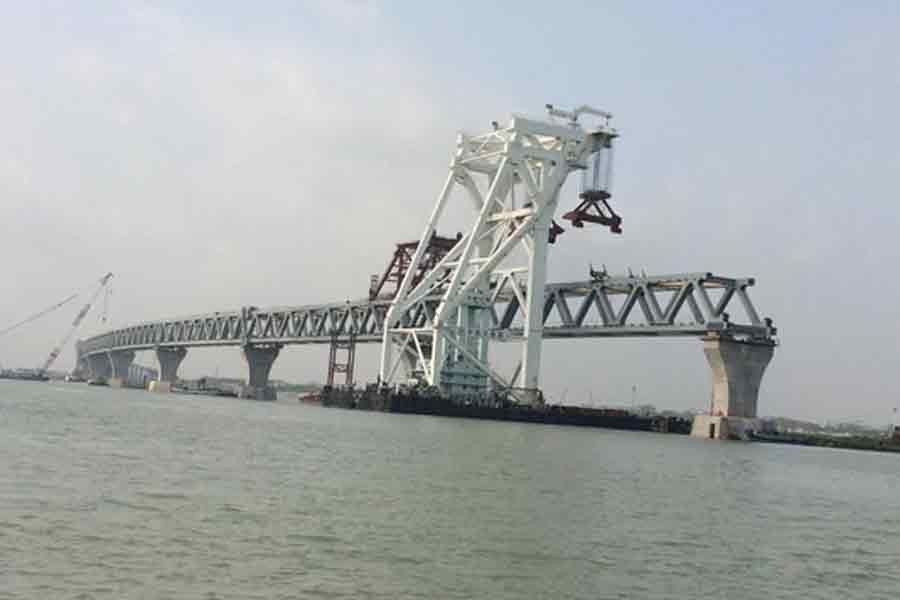With the setting up of the last span on the pillars 12 and 13 of the Padma Bridge, the most challenging part of the job has been accomplished. The infrastructure has now connected the capital with the entire south and south-west region comprising as many as 21 districts, one-third of the country's total. Spanning over three divisions --- entire Barishal and Khulna and five districts of Dhaka division, the area connected on the other side of the Padma River is almost one-third of the country's total area but the population size there is comparatively lower in proportion to the geography-population ratio at 325-350 million.
In popular discourse it is said that people of the 21 districts will benefit from the bridge and the outpouring of emotion and exuberance has often gone overboard. The fact is not every one of the inhabitants of those districts is going to reap dividends and, on the other hand, the benefits will only be reserved for people on that side alone is also misleading. Many on this side of the Padma will find it extremely beneficial on uncountable scores. Some will take immediate advantage of the facility in a direct way but others will indirectly enjoy the fruits of the gigantic infrastructure. On that count, entire Bangladesh is going to reap rich dividends from this mega project.
However, people from the 21 districts, who live on this side of the Padma for various reasons count on visiting their homes more often than they did before. Equally, those living in these districts who have to travel to the capital or places beyond in the east or north-east on business or other purposes will consider the bridge a boon. Overall, a kaleidoscopic view of a road and rail-connected country is all the more soothing.
Yet, the exuberances volleyed following the positioning of the last span courtesy of media reports and social site posts seem to have been overshot. In fact the extraordinary feat was accomplished when engineers and advisers from 14 countries found the solution in installing the world's longest pillars on one of the most treacherous riverbeds in the world. Once that challenge was overcome, setting up of bridge spans went according to the plan. There was no more technical glitch. The milestone was achieved at the time of redesigning and constructing the pillars which required extraordinary architectural talent and wisdom.
Some gave the impression that the bridge has been completed and soon it will be open for traffic. In fact that last span is like any of the 40 others both in size and shape. Many dismissed the bridge as a non-starter. Even when the first span was hoisted and placed on two pillars in 2017, there were people who were not convinced of the project becoming a reality. Particularly, when shifting soil on the riverbed at Mawa end threw a daunting challenge, even the bridge authorities were concerned. But all's well that ends well.
Expressions like 'we have shown the world our strength' or similar conceits are not in good taste. True, it was the prime minister's steely resolve and vision that have made bit by bit this project a reality. It is not the bridge itself alone but the highways on both sides and the green belt developed, that explain the farsightedness of a true political leader. The country has proved its economic strength by constructing the bridge with its own finance. But it would have been an icing on the cake if the country had also acquired the engineering and technical capability for construction of a bridge like this.
Still there is a long way to go before the bridge is commissioned. The single-line railway faces some design problem and will have to be rectified. In the meantime, work for the four-lane road transport above has to be synchronised with putting in place the slabs for railway track. Those will have to be put down from above the upper tier. So, when is the bridge going to be opened for traffic? Deadlines are as wide as June next to the first quarter of the 2022. Let the greatest cheer and celebration be put off until then.


